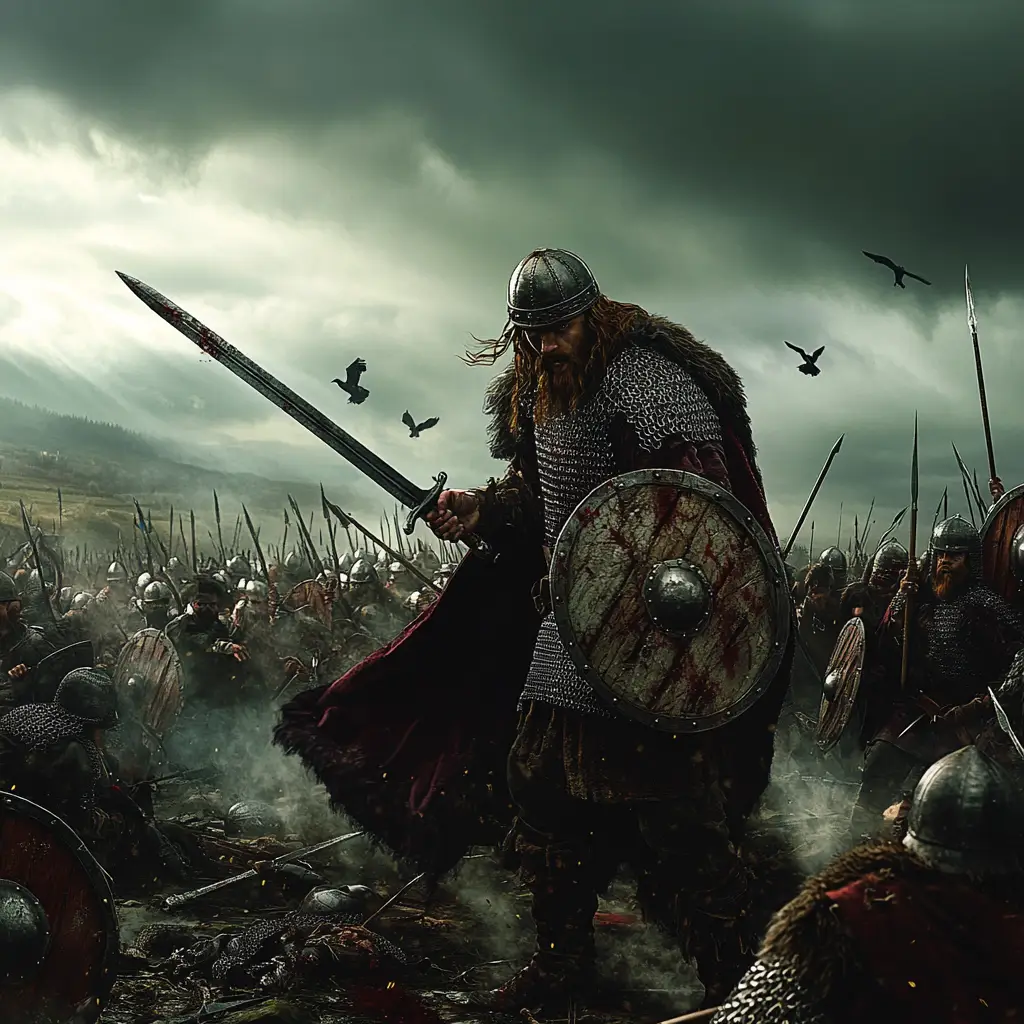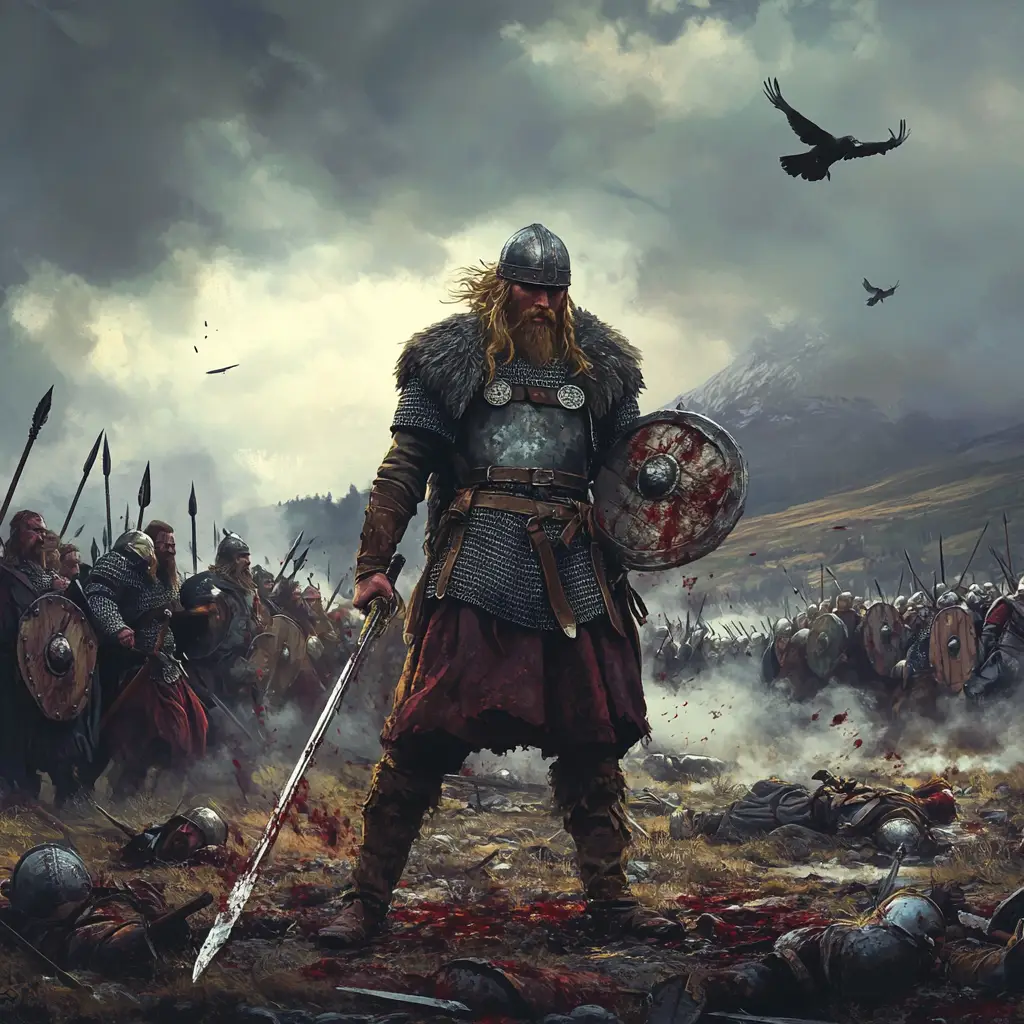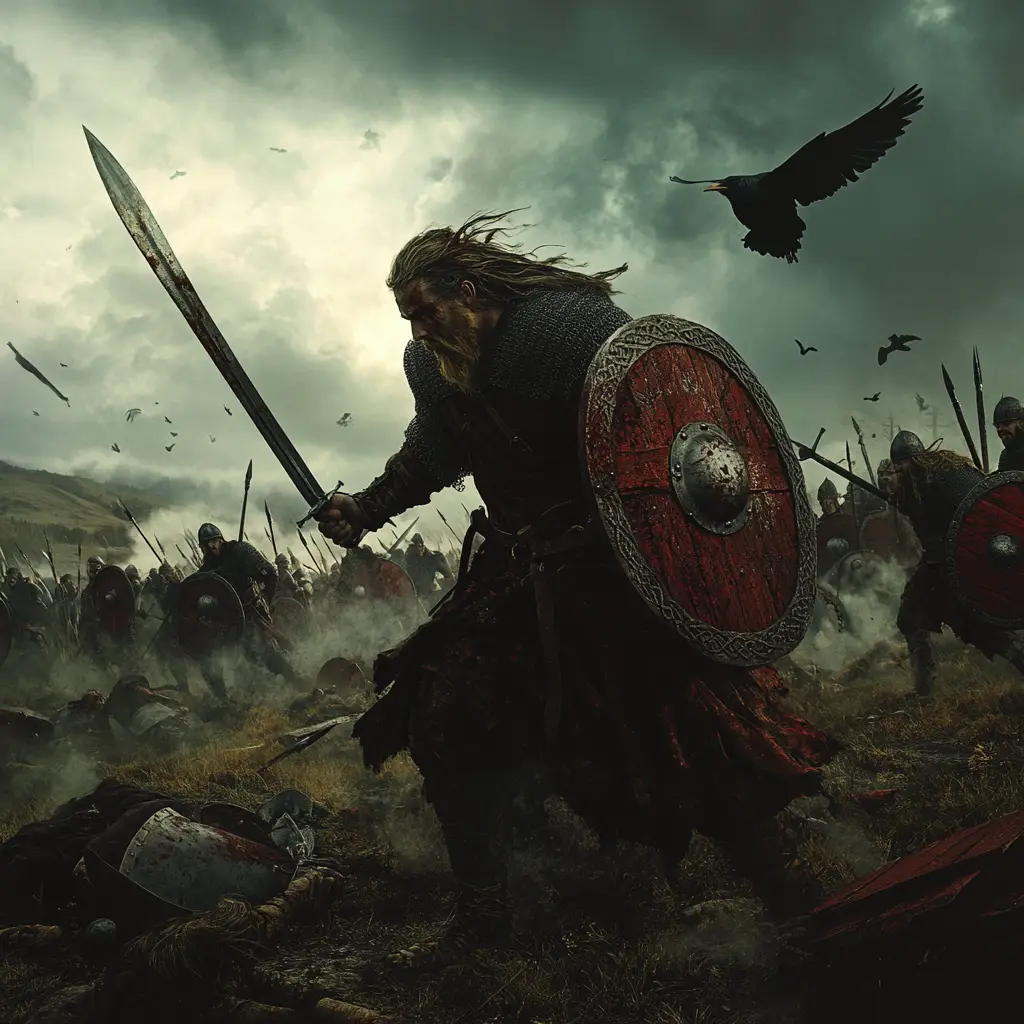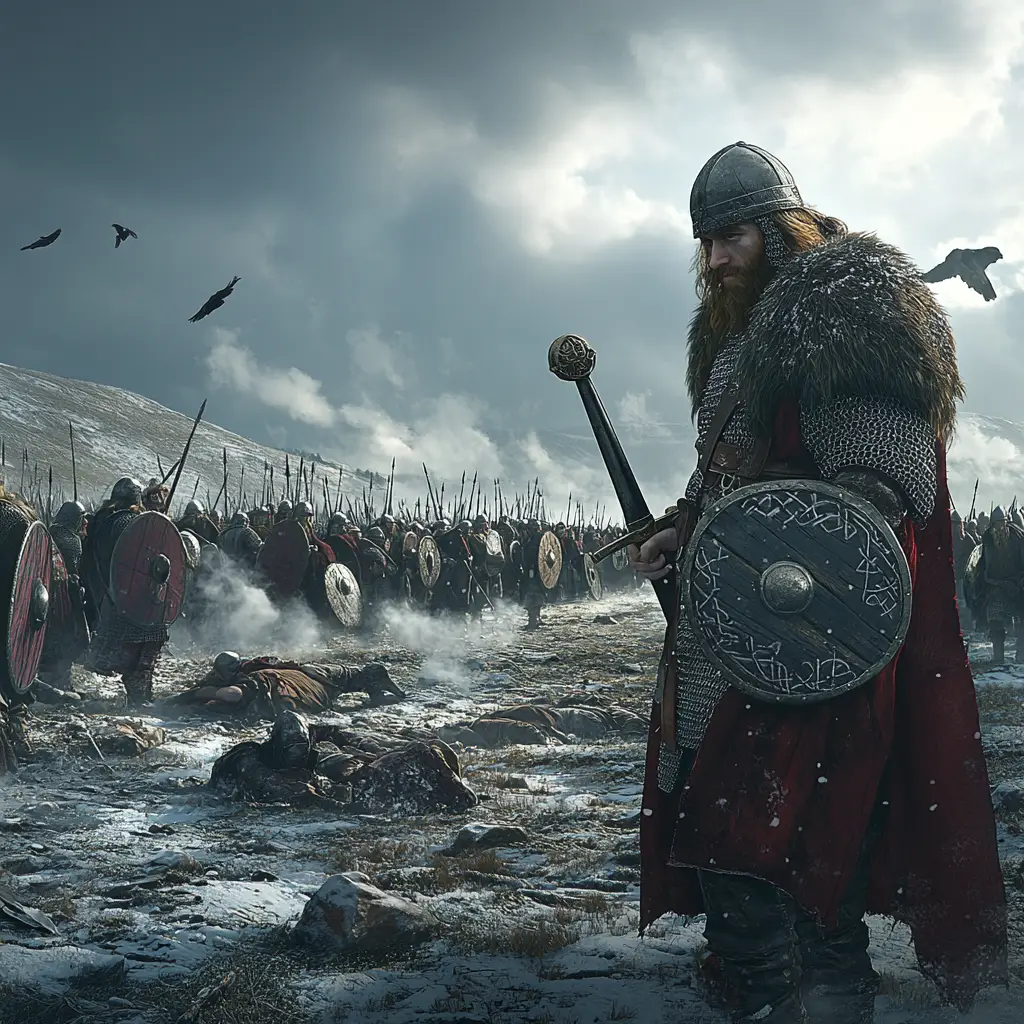871 AD
Location: Likely in Berkshire, England
Combatants:
Anglo-Saxons (Kingdom of Wessex) led by King Æthelred and Prince Alfred (later Alfred the Great)
Vikings (Great Heathen Army)
While historical sources don’t always agree on their exact names, the Anglo-Saxon Chronicle mentions that the Viking forces were commanded by:
Viking Leaders at Ashdown
Bagsecg (Bagsac) – A Viking king who was killed in the battle.
Halfdan Ragnarsson – A key leader of the Great Heathen Army, possibly present at Ashdown.
Several jarls (earls), including Sidroc, Osbern, and others – Some of these Viking earls were killed in battle.
Background
By 871 AD, the Great Heathen Army, a powerful Viking force, had already conquered much of England. Wessex was the last major Anglo-Saxon kingdom resisting Viking rule. In early January, the Vikings advanced into Wessex and set up camp at Ashdown. King Æthelred and his younger brother, Alfred, led the Wessex army to stop them.
the Battle Strategy & Tactics
Viking Strategy
The Viking army was led by two kings and several jarls (Norse chieftains).
They chose high ground for their defensive position, making it difficult for the Anglo-Saxons to charge uphill.
As in many Viking battles, they likely relied on their shield wall—a nearly impenetrable defensive formation where warriors locked shields to create a barrier.
The Vikings expected Wessex to wait and attack in formation, but Alfred changed the plan.
Anglo-Saxon Strategy
King Æthelred and Prince Alfred split their forces into two divisions, mirroring the Viking formation.
However, Æthelred delayed the attack because he insisted on finishing his prayers before engaging in battle.
Alfred, realizing they couldn’t wait, took command and led his men in an unexpected charge against the Viking line.
This aggressive move shattered the Viking shield wall, creating confusion and disarray.
Once Æthelred finally joined the fight, the full force of Wessex overpowered the Vikings, forcing them to retreat.
Why the Anglo-Saxons Won
Alfred’s initiative – Instead of waiting for his brother, Alfred acted quickly and caught the Vikings off guard.
Breaking the shield wall – Viking warfare relied on strong defensive formations, and once they broke, the Norse warriors struggled in open combat.
Stronger cavalry – Some accounts suggest the Saxons had better mobility, allowing them to chase down fleeing Vikings.
Outcome
Wessex victory – The battle was a turning point in the Anglo-Saxon fight against Viking invasions.
Several Viking jarls were killed, and their army suffered heavy losses.
Alfred’s leadership in battle foreshadowed his later success as King Alfred the Great, who would eventually push the Vikings back and lay the foundation for England’s survival.
Significance
One of the first major Saxon victories against the Vikings.
Demonstrated Alfred’s military skill, which later helped him defeat the Vikings permanently.
Boosted Anglo-Saxon morale – This victory proved the Vikings could be defeated in battle.
Slowed Viking expansion but didn’t end their invasions—Wessex continued to fight them for years.



